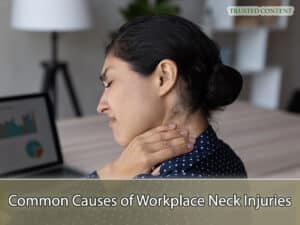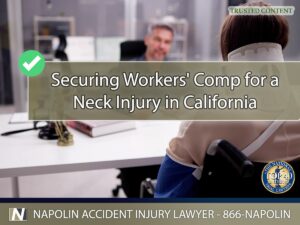Securing Workers’ Compensation for a Neck Injury in Ontario, California
In southern California, neck injuries in the workplace are a significant concern, often leading to long-term disability and substantial medical treatment. Understanding your rights under California's workers' compensation laws is crucial to securing the benefits you deserve. This article explores the legal landscape surrounding neck injuries at work, offering essential guidance on navigating these complex issues.
Understanding Neck Injuries in the Workplace
Neck injuries at work can range from mild sprains and strains to severe spinal injuries that could lead to permanent disability. Common types of neck injuries include:
- Whiplash, typically caused by sudden movement of the head and neck;
- Herniated discs, where disc material presses on spinal nerves;
- Pinched nerve, which can result in significant pain.
These injuries can drastically affect an individual's ability to perform their job and engage in everyday activities, making it essential to understand the options for legal recourse and compensation.
Legal Rights and Workers’ Compensation Benefits
California law provides comprehensive workers' compensation benefits for employees who suffer neck injuries on the job. Covered benefits include:
- Medical care necessary to treat the injury;
- Temporary disability benefits if you're unable to work while recovering;
- Permanent disability benefits if you don't fully recover;
- Supplemental job displacement benefits if you need retraining because your injury prevents you from returning to your usual job.

Common Causes of Workplace Neck Injuries
Common Causes of Workplace Neck Injuries
Neck injuries in the workplace are often caused by accidents or conditions that include:
- Falls from heights, such as ladders or scaffolding;
- Vehicle-related incidents, especially for employees who drive as part of their job duties;
- Repetitive strain from activities like typing or assembly line work;
- Impact injuries from objects falling or collisions.
Employers are required to maintain safe working environments and minimize risks, but accidents can still occur, leading to significant health challenges for employees.
Challenges in Claiming Compensation for Neck Injuries
While workers' compensation is designed to be a straightforward process, claiming benefits for neck injuries can be fraught with challenges. Common issues encountered include:
- Proving the injury is work-related, especially in cases of repetitive strain or cumulative trauma;
- Disputes over the severity of the injury and the appropriate level of benefits;
- Delays in receiving benefits or denial of claims by employers or insurance companies.
These challenges highlight the importance of detailed documentation and sometimes necessitate legal assistance to ensure fair treatment under the law.

Role of a California Workers' Compensation Lawyer
Role of a California Workers' Compensation Lawyer
Given the complexities involved in filing and receiving workers' compensation for neck injuries, the role of a specialized lawyer is critical. A workers' compensation lawyer can:
- Help gather and present evidence to support the claim;
- Navigate through the legal procedures and paperwork;
- Negotiate with insurance companies and represent the injured worker in hearings, if necessary.
Securing the services of an experienced lawyer who understands the intricacies of California's workers' compensation laws can make a significant difference in the outcome of your case.
Case Management and Legal Procedures
The process of managing a neck injury claim begins from the moment the injury occurs. Key steps include:
- Reporting the injury to your employer as soon as possible;
- Seeking immediate medical treatment and following all prescribed therapies;
- Filing a claim form (DWC-1) with your employer.
These initial actions are critical to setting the stage for a successful workers' compensation claim. Timely and accurate completion of all required steps ensures that the claim is processed efficiently, helping to avoid unnecessary delays.
Preventing Neck Injuries at Work
Preventing neck injuries in the workplace is vital for both employers and employees. Implementing effective preventive measures can significantly reduce the risk of injury and ensure a safer working environment. Some key strategies include:
- Regularly reviewing and improving workplace ergonomics;
- Providing training on safe work practices, especially for jobs involving physical labor;
- Ensuring that all equipment used by employees is maintained and safe;
- Encouraging regular breaks to prevent strain from repetitive tasks.
By fostering a culture of safety and awareness, employers can help minimize the occurrence of neck injuries, protecting their workforce and reducing the need for workers' compensation claims.

Securing Workers' Compensation for a Neck Injury in Ontario, California
Securing Workers' Compensation for a Neck Injury in Ontario, California
If you've suffered a neck injury in the workplace, it is essential to understand that you have rights under California law that are designed to protect you and provide you with the necessary support. Navigating the complexities of workers' compensation claims can be challenging, but you don't have to do it alone. At Napolin Accident Injury Lawyer, we bring extensive litigation experience to the table, advocating for injured workers throughout southern California.
We encourage anyone who has experienced a workplace neck injury to reach out for a free consultation. Our team is ready to help you assess your situation, guide you through the legal process, and work to secure the compensation you rightfully deserve. Don't let the burden of a neck injury weigh you down—call us today at (909) 962-8415, and let us help you take the first step towards recovery and justice.
